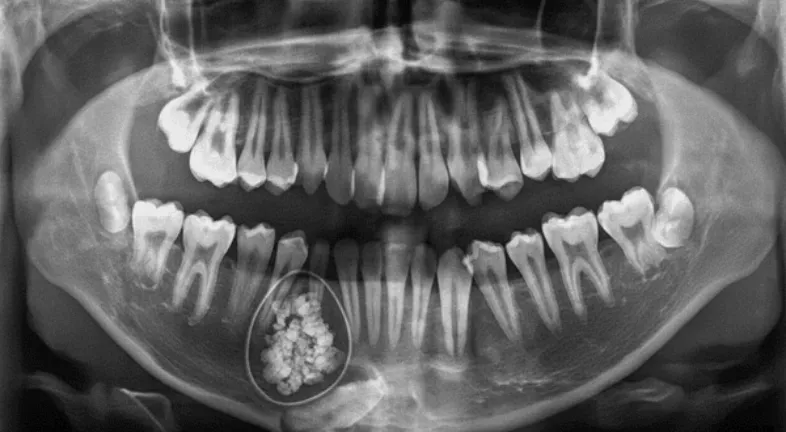
Table of Content
While straight and beautifully aligned teeth can do wonders for your self-confidence, very few people are endowed with a naturally straight smile. Many people experience mild to severe misalignment.
Minor teeth misalignments can often be corrected with cosmetic restorations like veneers or bonding. However, these only mask the disfiguration without fixing the underlying issue.
While clear aligners are tried and tested methods to correct crooked teeth and align dentition, the question is, can they straighten back teeth?
Contrary to popular belief, invisible aligners can move back teeth and align them, although this may take a few months longer.
Molars can be awkward to move or straighten because there is less room for movement, and rear teeth tend to be deeply embedded in the jaw bone.
Therefore, the popular opinion is that only metal braces work in this situation. However, this is a misconception:
They move the rear teeth in the same way as they move other teeth, the difference being that moving molars may take longer, depending on the degree of misalignment. In some cases, you may require more aligner trays to move the molars, but this is considered in your treatment plan.
Moving back teeth doesn’t always have to be expensive but will be more costly than a minor cosmetic adjustment in the smile line. That said, costs vary significantly from patient to patient, depending on the complexity of the patient’s orthodontic situation, the type and number of teeth aligners required, and the brand used.
You can check out Caspersmile which is an affordable at-home clear aligner brand. Order an impression kit, make your teeth impressions at home, approve your treatment plan, and receive your aligners.
The good news is that in addition to moving the back teeth, clear aligners in the UK can also fix a range of malocclusion issues.
Here’s a closer look:
An overcrowded dentition can be caused by several problems like abnormally shaped or overly large teeth, premature loss of baby teeth, or a small jaw. Each new invisible aligner can move crowded teeth up to 0.25 mm, thus bringing the dental arch back into realignment. The dentist may also make room in the jaw by extracting one or more teeth if needed.
Spaces between the teeth not only ruin your smile but also trap food particles and increase the risk of developing gum disease. Personalised teeth aligners can move teeth in a way that reduces or eliminates gaps. Patients are advised to wear retainers after teeth straightening treatment to prevent the re-formation of gaps.
When the upper dental arch extends beyond the lower set of teeth, it causes an overbite. Clear aligners can effectively fix mild to moderate cases. Dentists also use mandibular attachments or motion appliances to aid movement in severe overbite cases.
An underbite occurs when the bottom teeth protrude beyond the upper jaw. An untreated underbite may lead to faster tooth decay, chewing difficulties, and headaches. Clear aligners can correct some underbite issues, while others may require surgery in addition to teeth straightening treatment.
Crossbite problems are relatively common, and specialised invisible aligners can treat many cases.
A scissor crossbite occurs when the lower set of teeth points outwards and the upper teeth point inwards. On the other hand, a dental crossbite occurs when the upper and lower arches don’t align properly.
Invisible aligners can correct crossbite issues by moving the misaligned or awkwardly angled teeth into the correct positions.
You can get an initial impression kit delivered to your doorstep. You will then have to make moulds of your teeth using the easy instructions which come with the kit. After you are done making the moulds, you can mail them back to your clear aligners manufacturer.
Once the team receives your dental impressions, a 3D digital plan will be created and sent to you for approval. The fabrication of your custom-made clear aligners will begin once you approve the plan.
You will receive your aligner kit at home. It will have several aligner trays of different sizes. You will need to replace your set of clear aligner trays after a maximum of 10 days.
If you want that straight smile but are less enthused about painful and unsightly metal braces to straighten back teeth, aligners may be the ideal solution for you.
Clear aligners in the UK have become a popular alternative among teens and adults as they are as effective as ‘regular’ braces in mild to moderate cases. Moreover, aligners are more than a match in terms of price, with less complex aligner treatments priced considerably less.
If you’ve just started teeth straightening treatment, chances are, you’re still new to the process and may have questions about how to use clear aligners for the best results.
It’s a good idea to wear clear braces (aligners) for at least 20-22 hours a day. 22-hour compliance is necessary because aligners are only effective when they are in physical contact with your teeth.
If you constantly take aligners out, teeth will shift back to their original positions and delay straightening.
If you fail to comply with the 22-hour rule, you may need to wear the tray for a more extended period, or in some cases, the patient may need a new set of clear aligners. So do take them out when eating and drinking as instructed but also remember to put them immediately back in after food.
Remember to keep these simple tips in mind throughout your teeth straightening treatment:
All of the tips above will enhance the many existing benefits of clear aligners in the UK, enabling you to get the most out of your teeth straightening treatment.
If you’re self-conscious about your crooked smile and need clear aligner treatment, take a free online assessment at Caspermsile to determine your eligibility.
Curated the best for your knowledge
 Odontomas: What They Are and How They're Treated
Odontomas: What They Are and How They're TreatedSome dental conditions are quiet. Too quiet, in fact. Odontomas fall into that category. They rarely make noise, yet they change things beneath the surface. And people usually have no idea about them. While malocclusions, teeth shifting, discoloration, or other cosmetic dental issues are fairly well known, odontomas are not. So, an odontoma is technically a type of tooth tumor. It’s benign, harmless, but oddly structured. Hence, it can interfere with tooth eruption, displace teeth, or cause swelling. However, there’s more to it. Here’s a deeper dive.
Read More.webp) Gingivitis Treatment: How to Reverse Early Gum Disease
Gingivitis Treatment: How to Reverse Early Gum DiseaseGingivitis tends to creep up quietly, usually after a stretch of rushed brushing or nights where flossing just slips your mind. The first sign is often bleeding when you spit toothpaste into the sink. That moment makes people Google how to cure gingivitis, which is honestly the right instinct. Early gum inflammation happens because plaque irritates the tissue around the teeth. If you respond quickly, it is fully reversible. Most cases improve quickly with proper cleaning, hydration and small tweaks in daily habits. The key is not ignoring those early red or puffy gum signals.
Read More.webp) Metallic Taste in Mouth: Causes and How to Get Rid of It
Metallic Taste in Mouth: Causes and How to Get Rid of ItHaving metal taste in the mouth first thing in the morning can be an unexpected experience. You wake up, take a swallow, and suddenly have a metallic taste in your mouth, as if you'd been chewing on a handful of change. It's annoying, a little scary, and sometimes for no apparent reason. For some people, it will be nothing but a minor nuisance; others may fall into the late-night goose chaser. Sometimes it's a sign that there is something wrong with your braces; other times, it could mean that there is something wrong with one of your teeth. But here's the good news: Most metallic tastes are temporary, harmless, and can be treated or resolved. So let's take a closer look at the possibilities.
Read MoreQuick Links

Heading